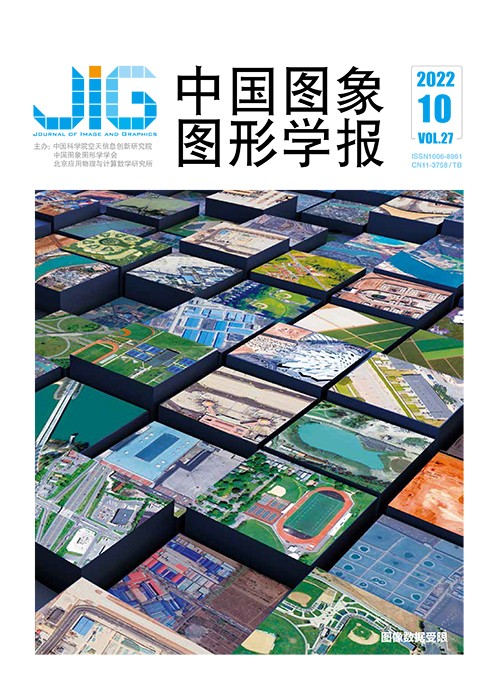
融合多尺度旋转锚机制的海洋中尺度涡自动检测
摘 要
目的 海洋中尺度涡自动检测是了解其演变规律,研究其在海洋物质运输和能量传递中的作用的基础。针对海洋中尺度涡形态不规则、结构复杂多变、长宽比不确定,以及涡群海域中尺度涡分布密集导致的检测精度低的问题,提出一种基于深度学习多尺度旋转锚机制的海洋中尺度涡自动旋转检测方法。方法 首先对卫星遥感海平面高度异常数据进行可视化预处理,并采用图像处理策略对数据集进行扩充构建训练集;其次构建了一种基于深度学习多尺度旋转锚机制的中尺度涡自动检测模型,考虑到中尺度涡尺度变化大和其所处海洋环境复杂多变的特点,主干网络采用RetinaNet提取中尺度涡特征,同时采用特征金字塔结构融合中尺度涡的低层与高层特征,设计多尺度、多长宽比以及多旋转角度锚点机制实现多尺度旋转检测锚的生成;最后集成分类与回归两个子网络,实现海洋中尺度涡的自动旋转检测。结果 实验结果表明,提出的中尺度涡自动检测方法极大改进了水平检测框存在显著的大纵横比导致检测精度低和检测框嵌套和重叠现象。本文方法最优检测精度为90.22%,与水平检测方法相比,精度提升了8%。在印度洋、太平洋、大西洋和赤道海域进行了海洋中尺度涡的旋转检测实证分析,验证了模型具有很好的泛化能力。结论 本文通过设计多尺度、多长宽比和多旋转角度实现多尺度旋转锚的生成机制,达到中尺度涡目标旋转检测,有效克服了水平检测框区域冗余和检测框重叠、嵌套现象,显著提升了中尺度涡检测精度。
关键词
Multi-scale rotating anchor mechanism based automatic detection of ocean mesoscale eddy
Du Yanling1, Liu Qianqian1, Wang Lili1, Xu Xin1, Wei Quanmiao2, Song Wei1(1.College of Information, Shanghai Ocean University, Shanghai 201306, China;2.East China Sea Bureau of Ministry of Natural Resources, Shanghai 200136, China) Abstract
Objective Mesoscale eddy analysis is developed in the field of world's oceans and marginal seas. The multi-scale response mechanism and feedback interaction of mesoscale eddy and ocean phenomena has been promoted through mesoscale eddy generation, growth and extinction, the large scale spatial mesoscale eddy is essential to the issues of transport and distribution of global marine contexts of energy, heat and fresh water in terms of the feature of irregular three-dimensional structure and multifaceted dynamics. Therefore, the automatic detection of ocean mesoscale eddy can be used to understand the evolution of ocean mesoscale eddy and the role of ocean mesoscale eddy in material transport and energy transfer. The traditional ocean mesoscale eddy detection methods are mostly adopted based on the physical parameter, flow field geometric feature or both of them. The mesoscale eddies are detected by setting appropriate threshold artificially. The emerging deep learning technology is beneficial to ocean mesoscale eddy detection methods based on deep network model. A classifier is used to classify mesoscale eddy based on manual design and features extraction. The traditional algorithm has good mesoscale eddy detection effect via horizontal bounding box. However, the marine scenario of mesoscale eddy is complicated and ocean mesoscale eddy has the feature of irregular shape, complicated structure and length-width ratio uncertainty and dense distribution. The traditional threshold-dependent detection algorithm has constrained of its rigid and poor generalization ability. The horizontal boundary box methods have redundant horizontal detection region, nested detection box and overlapped issue. Therefore, we propose an automatic detection method of ocean mesoscale eddy based on multi-scale rotating anchor mechanism. Method We visualize and normalize the satellite remote sensing sea level height anomaly data. The visual dataset is annotated based on ocean mesoscale eddy understanding and global daily ocean eddy satellite altimeter data. To expand small number of accurate expert annotation data sets, we use two-dimensional image processing strategy to construct the training set, such as adding noise and clipping operation. The basic features are derived of the factors of scale and signal noise ratio. We construct an automatic mesoscale eddy detection model based on multi-scale rotating anchor mechanism and one-stage object detection network RetinaNet. In the network structure, ResNet backbone network extract mesoscale eddy feature through introducing residual mapping and jump connection into the network. The feature information of the obtained residual block is added into the following residual block. It avoids the problem of gradient disappearance and deeper feature information loss effectively. At the same time, we use the feature pyramid network structure to integrate the low-level and high-level features of mesoscale eddy. It provides spatial and high-level semantic feature information of complex structure, different scales and more rapid sustainable changes. To cover the multi-oriented mesoscale eddy object with arbitrary shapes, it is generated that multi-scale rotation detection anchors are composed of scale, multi-aspect ratio and multi-rotation angles for each grid point of the output feature map. We integrate the classification and regression subnetworks, in which the classification subnetwork predict the probability of the presence of the object spatially, and the regression subnetwork predict location information via the regression transformation of predictive bounding box and the generated anchor. Finally, non-maximum suppression is used to obtain the final detection result. Result Thanks to multi-scale rotating anchor mechanism, this experiment shows that our ocean mesoscale eddy automatic detection method can improve the issues of low detection precision, detect box nesting and overlapping via large aspect ratio of ocean mesoscale eddy, the deductible area of horizontal detection. It can detect the existence of multi-core eddy effectively. Furthermore, comparative analysis is conducted in same data set between feature pyramid networks (FPNs), faster region-convolutional neural networks (Faster R-CNNs) and ours. It shows that the optimal detection accuracy can reach 90.22%, which is 8% higher than the horizontal bounding box detection method, and there is not much difference in speed. Then, we evaluate the accuracy, recall and F1 value amongst the Indian Ocean, Pacific Ocean and Atlantic Ocean. At the same time, the center and scale information of mesoscale eddy can be obtained based on the output position information of the boundary box. Finally, we carried out an empirical analysis of the rotation detection of oceanic mesoscale eddies in the Indian Ocean, Pacific Ocean, Atlantic Ocean and equatorial waters, which illustrates that the model has its potential generalization ability. Conclusion Our research is focused on detection redundancy, overlapping and nested detection boxes in the horizontal bounding box detection method. We facilitate a deep network model based on a one-stage target detection network RetinaNet and promote the generation mechanism of multi-scaled rotating anchors via multifaceted ratio and multi-rotation, and the integrated classification and regression subnetworks. Non-maximum suppression is used to obtain the final detection results. The features of mesoscale eddy are demonstrated based on irregular shape, complex and variable structure, uncertain ratio and dense distribution, The redundancy, overlap and nesting barriers of the horizontal detection box region are released effectively and the existence of multi-core eddy can be detected. Our method improves detection accuracy and guarantee the detection speed compared to the popular object detection methods in recent three years. We evaluated the experimental effectiveness of data augmentation on the original dataset, the noise-added dataset, and the noise-trimmed dataset. We carry out the accuracy, recall and F1 value analysis based on multiple oceans like the Indian Ocean, Pacific Ocean and Atlantic Ocean, which demonstrates the generalization ability of the model.
Keywords
object rotation detection ocean mesoscale eddy sea level anomaly deep learning multi-scale rotating anchor
|



 中国图象图形学报 │ 京ICP备05080539号-4 │ 本系统由
中国图象图形学报 │ 京ICP备05080539号-4 │ 本系统由